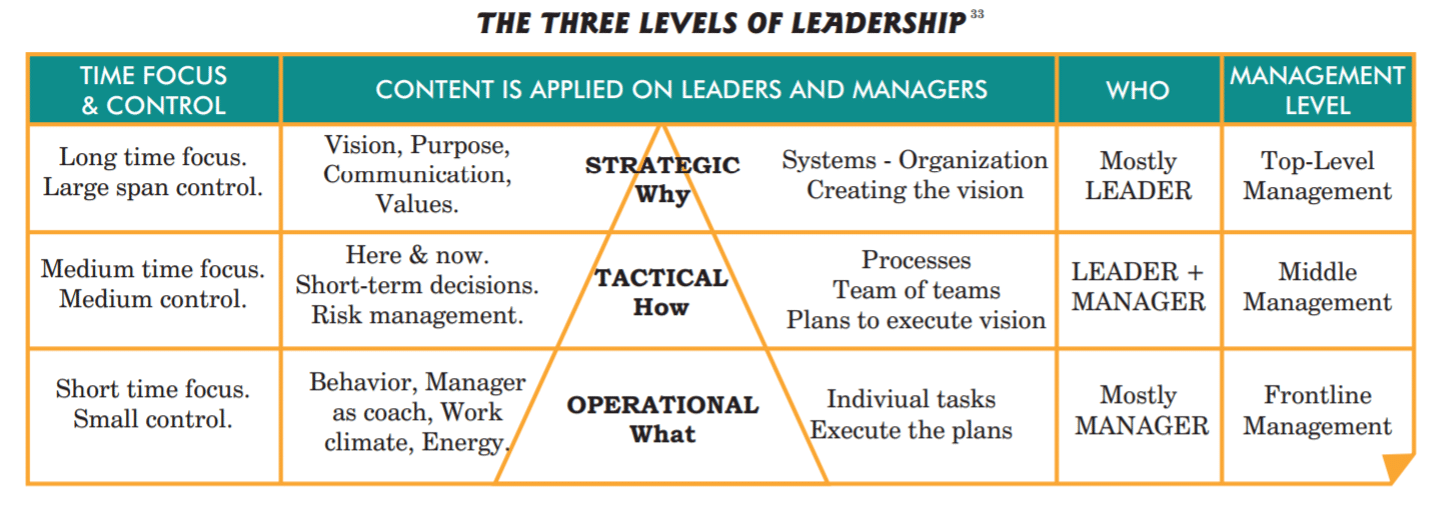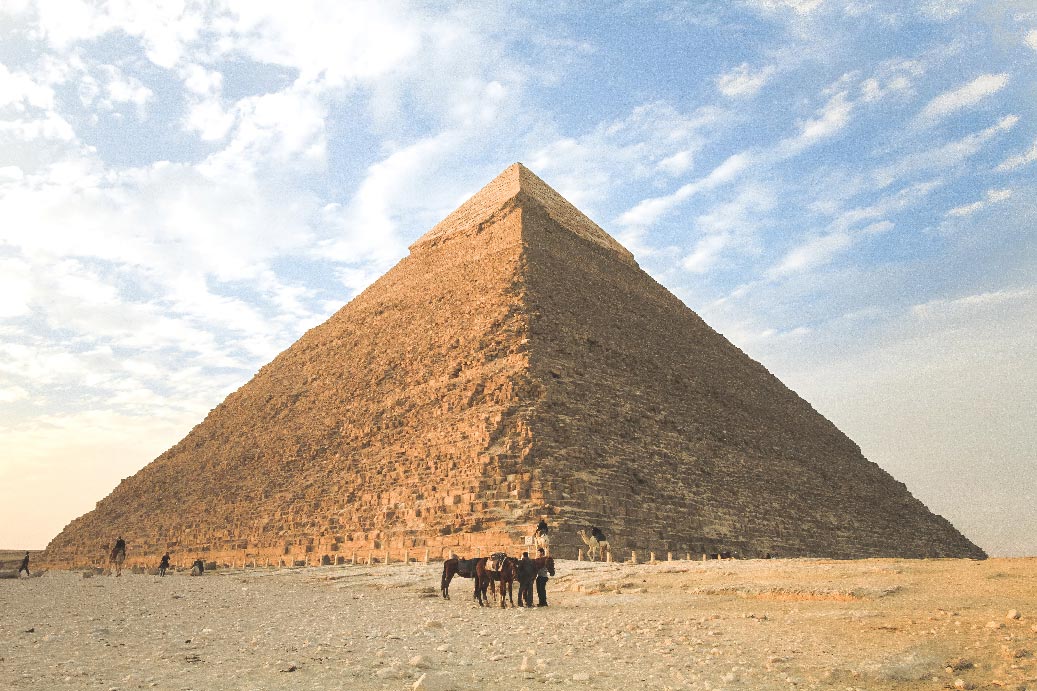LEVELS OF LEADERSHIP
What level of leadership are you operating at? One of the challenges many leaders and managers face is in understanding the distinctions between levels of leadership. By considering the descriptions of operational, tactical, and strategic leadership, you can develop an understanding of your own leadership and adapt it to the needs of the situation and the organization. When we think of different levels of leadership, I want you to think about a pyramid. Look at the pyramid and the three different levels: STRATEGIC, TACTICAL AND OPERATIONAL. Why pyramid? At the top, we will have one executive director or CEO, but at the bottom we’re going to have many more employees and managers. The second reasons we use a pyramid, is because it’s hierarchal. Usually people start at the operational level or frontline management, move to the tactical level or middle management, and finally reach strategical level or top management. Working together at different levels, people create a harmonious system of support for an organization. Let’s explain levels one by one.

1.On the top of the pyramid is Strategic Leadership – it explains Why we exist as an organization
Strategic leadership is concerned with the long-term purpose and goals of an organization. By having a compelling vision and mission, a strategic leader will motivate people to achieve its purpose. Strategic leader is setting a direction for the organization. The leader is setting the vision that will determine our actions through the organization. Strategic leader is often identified as a CEO or an Executive director. Strategic leader is influencing people to do what? You got it, to achieve the organizational vision and mission through objectives. When we are thinking about leadership, we’re thinking about communications, inspiring people and influencing their behaviors. Not all managers are leaders. The leaders position doesn’t make the leader… A leader fulfills the position.

2.Second level is Tactical Leadership. It explains how we manage organization and different processes to achieve organizational goals. Tactical leaders are establishing and implementing mechanisms and processes to ensure that the organization achieves its objectives.
In the level of tactical leadership or the middle management, we have, what we call functional managers and, in some organizations, department managers. The functional managers would oversee functional areas such as marketing, finance, operations, HR or lead different departments.

3.Third level is Operational Leadership. Operational leaders ensure what is needed to be done in order to achieve organizational goals.
Operational leaders are frontline managers and they manage the operatives, those people with hands-on, on the ground. Frontline managers may manage coordinators, assistants, interns and would be the first level of leadership that one would naturally step into. Project leaders also perform on operational level.
Now, why don’t we just excel and lead at strategical level? Well, it’s a matter of skills. So, let’s look at THE SKILLS REQUIRED ACROSS THE GIVEN LEVELS. I want you to consider three skill sets. First, at operational level we have our technical skills, those skills required by operatives to get the job done. They’re hands-on skills, time and task-oriented skills and often related to a project. The next level of skills are HR skills, our human relation skills, also known as interpersonal or social skills. And the third skill is conceptual. Conceptual skills are those visioning decision-making and strategic skills. So, let’s look at our given levels, and as they relate to skills.

Now, at operational level of leadership we need our technical skills the most, as compared to the other levels of management. At operational level we’re relying on those skills much more than at the top. The opposite is with conceptual skills. Strategic leaders require vision setting and decision-making skills. At all levels we need high quality of human relation skills.
What level of leadership are you operating at? I want you to think about the areas where you have strong skills, where would you like to improve, and where you see yourself in the future? Lots of room to grow, lots of great interesting areas to dig into.
SOURCES:
- Sabina Morosini, Joyful Leadership Manual #
- Morosini Turčinović, S. (2018). The three levels of leadership: What level of leadership are you operating at? Unpublished manuscript, Laboratory of Social Psychology, Croatia.
